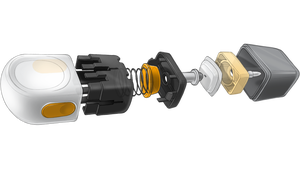Why 3D brain surgery is like watching Avatar
You don't often hear a surgeon compare brain surgery to watching Avatar, but for surgeon Shahzada Ahmed, it's an apt comparison. He and his team were the first medical personnel in the UK to don 3D glasses before removing a brain tumor. It was a bit like "going to the movies," Ahmed told BBC News after performing the procedure at Queen Elizabeth Hospital in Birmingham. "Avatar is a great movie in 2D, but it is even better in 3D," he said.
January 24, 2014
You don't often hear a surgeon compare brain surgery to watching Avatar, but for surgeon Shahzada Ahmed, it's an apt comparison. He and his team were the first medical personnel in the UK to don 3D glasses before removing a brain tumor. It was a bit like "going to the movies," Ahmed told BBC News after performing the procedure at Queen Elizabeth Hospital in Birmingham. "Avatar is a great movie in 2D, but it is even better in 3D," he said. Ahmed gave two thumbs up to the device used to produce the 3D images, noting, in particular, that the scope provided a "better appreciation of depth" and "better understanding of where [the instruments] are in relation to key parts of the anatomy."
While the use of 3D and high-definition technology is not new in minimally invasive surgery, it has not been applied to brain surgery because conventional scopes are too large and rigid. That is changing thanks to Israel-based Visionsense, which has designed a scope that is thin enough to enter narrow passageways and navigate in the brain while producing high-quality images. The a-ha moment for the company came when it began investigating the eyes of bees, as BBC News recounts in an accompanying article.
Most 3D scopes require two optical channels that capture images that are then blended to create the 3D effect. Fitting a device of that size through the nose to access the brain was not going to work. To downsize the device into a single channel, company founder Avi Yaron and his team took inspiration from the compound eye of a bee. A single scope with hundreds of thousands of micron-sized elements on a sensor map the surgical field from many different vantage points, writes BBC News health reporter Smitha Mundasad. Software then translates the images for the left and right eye.
None of this might have happened in precisely this way if Yaron had not been in a motorcycle accident around 20 years ago. How so? Well, for the rest of the story, as someone used to say, go to the BBC News site and read, "Head space: Finding a way to do 3D surgery on the brain."
About the Author(s)
You May Also Like




